Betws is a small village and community on the south bank of the River Amman, some fifteen miles north of Swansea. It is part of the area of Ammanford, but has its own parish church, dedicated to St. David which dates back to pre-Norman times. There were two collieries in Betws, Ammanford No 1 and Ammanford No 2, which have long since closed as well as the Betws Drift Mine, which has also sadly closed.
The men of Ammanford who fell during both world wars appear to be commemorated on the Ammanford War Memorial pillars. There does not appear to be a separate war memorial to the villagers of Betws who fell during both World Wars.
There is, however, a memorial stone in Betws Park which reads: ‘This peaceful garden is a living tribute to those who lost their lives in wars, mining accidents and other tragic incidents. THEIR MEMORY IS OUR HERITAGE.’ As there are no names on the memorial, I have taken the decision to create this web-page for the fallen of Betws in both world wars. If anybody has details of any war memorial at Betws, I would be most grateful to hear.
The Great War, 1914-1918
Stanley Allen, Private, 1158, Welsh Guards. Stanley was born in Tumble in 1891, the son of David Henry Allen and Margaret Allen. The family later moved to Bryn Celyn, Betws. Stanley married Mary Ann Richards, of 2, Gorseinon Terrace, Gorseinon, in 1915. He enlisted at Swansea into the Welsh Guards, and was sent to France with the 1st Battalion, as part of the 3rd Guards Brigade, Guards Division. This Division has the distinction of being formed in France in August 1915. The various Guards units that had been with other Divisions were withdrawn to be brought together to create this fine formation. It remained on the Western Front throughout the war and saw its first major action during the Battle of Loos on 25 September 1915, remaining in the area during the coming months, where they also fought in the subsequent Action of Hohenzollern Redoubt, before moving to Ypres to rebuild, in preparation for a move to the Somme. Stanley was sadly wounded at Ypres, and brought to the Casualty Clearing Station at Remy Sidings, where he died of wounds on 13 May 1916. He was 25 years old, and is buried at Lijssenthoek Military Cemetery, Belgium.
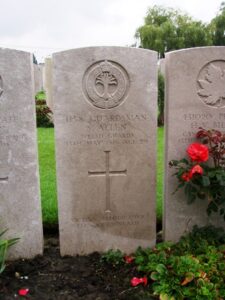
David John Ashton, Private, 41581, Worcestershire Regiment. David was born in Betws in 1895, the son of William and Grace Ashton. The family later moved to 32, Wernolau Road, Ammanford. David worked at Hopkinstown prior to enlisting into the army in May 1915 and at some time in 1917 was posted to the 1/8th Battalion, Worcestershire Regiment, which had been in France since March 1915 attached to 144 Brigade, 48th (South Midland) Division. The Division had seen its first major engagement at the opening of the Battle of the Somme. In March 1917 the division followed the German Retreat to the Hindenburg Line, and later in the year fought during the Third Battle of Ypres. The division was ordered to Italy on 21 November 1917, where it remained for the duration of the war, taking part in actions on the Asiago Plateau. David was killed in action in Italy on 9 August 1918. He was 24 years old, and is commemorated on the Giavera Memorial, Italy.
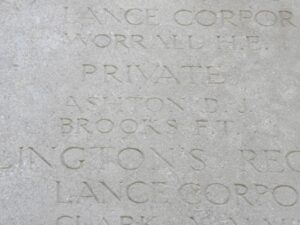
William Aubrey, Gunner, 58510, Royal Garrison Artillery. William was the son of David and Susanna Aubrey, of Wauncwmffor, Betws. He enlisted at Pentre into the Royal Garrison Artillery, serving with their 3rd Siege Battery attached to the Third Army. The Battery were taking part in the offensive which saw the war turn in the favour of the Allies during August 1918, at the Battle of Albert, when William was killed in action on 22 August 1918, aged 38. He is buried at Warloy Baillon Communal Cemetery Extension, France.
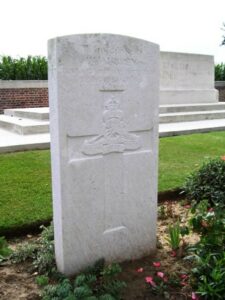
Thomas Davies, Private, 88592, Royal Welsh Fusiliers. Thomas was born in Cwmllynfell in 1893. By 1911 he was living with his adopted parents, Joseph and Eleanor Jones, at Maesyderi, Glanamman. Thomas enlisted at Carmarthen into the army and late in 1918 was posted to France, joining the 16th Battalion, Royal Welsh Fusiliers, who were attached to 113 Brigade, 38th (Welsh) Division. The Division had been in France since December 1915 and had famously captured Mametz Wood in 1916 and Pilckem Ridge in 1917. The division played a major part in the great offensive across the Somme battlefields from 21 August 1918 onwards, and drove the Germans back to and beyond the Hindenburg Line. Thomas was killed in action during the Battle of the Sambre, on 4 November 1918, aged 25. He is buried at Englefontaine British Cemetery, France. The Carmarthen County War memorial roll states that he was from Betws.
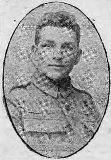
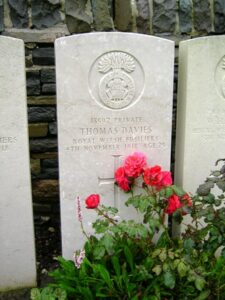
Evan Evans, Private, 29510, Royal Welsh Fusiliers. Evan was born at Merthyr in 1896, the son of John and Hannah Evans. By 1901 the family had moved to 4, Rice Street, Betws, and Evan enlisted at Ammanford in 1915 into the Royal Welsh Fusiliers. Early in 1916 he was posted to France, joining the 1st Battalion, Royal Welsh Fusiliers, which was on the Somme attached to 22 Brigade, 7th Division. The battalion contained two officers who would later become famous war poets, Siegfried Sassoon and Robert Graves, and as a result their part in the Somme battles is well documented. It played an important part in the capture of Fricourt on 1 July 1916, and later that month suffered heavy casualties at High Wood. It remained on the Somme throughout the offensive, and by December was in the line near Beaumont Hamel. Evan was wounded here, and died on 4 December 1916, aged 20. He was originally buried in Green Dump Cemetery, but due to the cemetery being destroyed by further fighting, is today commemorated on a special memorial within Ancre British Cemetery, Beaumont-Hamel, France.

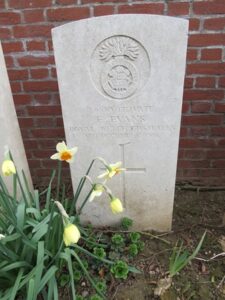
William Coslett Evans, Private, 13217, Royal Welsh Fusiliers. William was born in Betws in 1883, the son of Thomas and Hannah Evans. The family later moved to 2, Betws Road, Ammanford. William enlisted there into the 9th Battalion, Welsh Regiment. The battalion was attached to the 19th (Western) Division and crossed to France on 19 July 1915. The division saw its first major action on the opening day of the Battle of Loos on 25 September 1915 and suffered heavily, and the following year took part in the opening of the Somme offensive. William was wounded on the Somme and transferred to the 1st Battalion, Royal Welsh Fusiliers, and then later to their 4th (Garrison) Battalion. He was later transferred to the 17th Battalion, Royal Welsh Fusiliers, which was attached to 115 Brigade, 38th (Welsh) Division. The Division had landed in France during December 1915 and had spent their first winter in the trenches near Armentieres. In June the division marched south to the Somme, where it famously captured Mametz Wood in July 1916. The Division suffered terrible casualties at Mametz, and was taken out of the line, before moving to Ypres to rebuild. Here the division took part in the opening assault of the Battle of Pilckem Ridge. William was killed in action here during the first day of the battle, on 31 July 1917, aged 34. He has no known grave, and so is commemorated on the Ypres (Menin Gate) Memorial, Belgium.
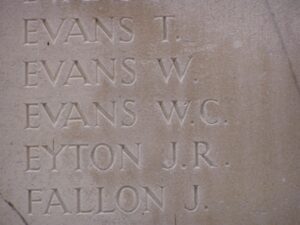
John Francis, Private, S/17876, Cameron Highlanders. John was the son of William and Rachel Francis, of Cwmrhydyreirin, Betws. He enlisted at Cardiff on 19 April 1915 into the Cameron Highlanders. John was sent to Inverness to train, before landing in France in June 1915, joining the 1st Battalion, Cameron Highlanders, who were attached to 1 Brigade, 1st Division. The Division had been one of the first to arrive in France, fighting at the Battle of Mons, and taking part in the retreat to the Marne, where the Germans were stopped. John joined the battalion at Ypres. Here they fought at the First Battle of Ypres, where they again stopped the German Offensive, before wintering in Flanders. The following year saw them in action again at the Battle of Aubers, before moving South to Loos, where they fought during the Battle of Loos. John was killed in action here on 13 October 1915 aged just 22. He has no known grave, and so is commemorated on the Loos Memorial, France.
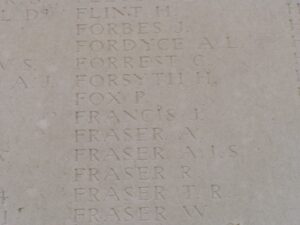
John George Gaylor, Leading Stoker, K/8085, Royal Navy. John was born at Clerkenwell, London on 15 August 1888. He had enlisted into the Royal Fusiliers in 1907, but did not appear to enjoy life in khaki and on 27 August 1910 enlisted into the Royal Navy. He married Florence Hatfield in 1912, and the couple had three children. Upon the outbreak of war, Florence moved with the children to Field Street, Ammanford, as the couple had family living at 15, Villiers Road, Ammanford. John had served aboard a variety of ships before the war and from 13 February 1914 was serving aboard the cruiser HMS Birmingham and saw action at the Battle of Heligoland and the Battle of Dogger Bank aboard her. On 23 March 1916 he was posted to the shore base HMS Victory II, before joining the crew of the battleship HMS Glory on 7 August 1916, following her recommissioning. On 1 June 1917 he was posted back to HMS Victory II. He became ill with pneumonia, and returned with his family to his cousins home at 15, Villiers Road, Ammanford, to recuperate from his illness. Sadly, John suffered a heart attack, brought on by his pneumonia, and died on 13 August 1917, aged 28. He is buried in St. David’s Church Cemetery, Betws.
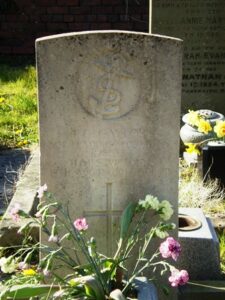
William Higgs, Acting Sergeant, 200898, Welsh Regiment. William was born in 1895, the son of Jonathan and Elizabeth Higgs, of Bryncam, Betws. He enlisted at Ammanford into the 1/4th Battalion, Welsh Regiment. The Battalion was attached to 159 Brigade, 53rd (Welsh) Division, which moved to the Mediterranean, sailing from Devonport in July 1915. They arrived at Mudros by 5 August 1915, and landed at Gallipoli on 9 August. Here they were immediately plunged into action, and spent the next few days in isolated pockets fighting against a Turkish counter-attack. The Division remained here throughout the coming months, and suffered severe losses in manpower strength during the great November 1915 blizzard on Gallipoli, when its total strength was reduced to less than that of a full-strength Brigade. On 11 December 1915 the Division was evacuated to Mudros, and by 23 December 1915 were moved to Egypt. They remained on the Suez Canal Defences for the next twelve months, and in early 1917 moved into Palestine, where they remained for the duration of the war, fighting at the Battles of Gaza, and successfully capturing Jerusalem. William was killed in action during the First Battle of Gaza, on 26 March 1917, aged 21, and is buried at Gaza War Cemetery.
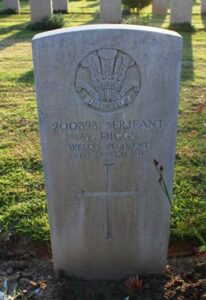
Albert John Hunt, Private, 31232, Machine Gun Corps. Albert was the son of Richard and Jane Hunt, of 32, Park Terrace, Pantyffynnon. He enlisted at Ammanford into the South Wales Borderers. He later transferred to the 70th Company, Machine Gun Corps, attached to the 23rd Division, which had been in France since December 1915, and they saw their first major action at the Battle of Albert, where they captured Contalmaison, and then fought at the Battle of Bazentin, the Battle of Pozieres, the Battle of Flers-Courcelette, the Battle of Morval and the Battle of Le Transloy, where they captured Le Sars. In May, 1917 they took part in the Battle of Messines, which is where Albert was killed in action on 7 June 1917, aged 20. He has no known grave, and so is commemorated on the Ypres (Menin Gate) Memorial, Belgium.
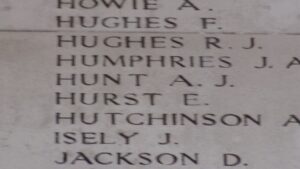
John Jenkins, Private, S/9161, Seaforth Highlanders. John was born in Merthyr Tydfil, the son of William and Elizabeth Jenkins. The family had moved to Betws by 1901, and John lived with his wife Edith Jenkins, at 49, Wind Street, Ammanford. John enlisted at Ammanford into the 8th Battalion, Seaforth Highlanders, which was attached to 44 Brigade, 15th (Scottish) Division. During July 1915 the Division landed in France, where they were to win regard by the enemy as one of the most formidable in the British Army. Here they fought at the Battle of Loos, and in spring 1916, the Division was involved in German gas attacks near Hulloch, and in the defence of the Kink position. John became a victim of the gas attack, and sadly died of his wounds on 29 April 1916. He was 29 years old, and is buried at Noeux-Les-Mines Communal Cemetery, France.

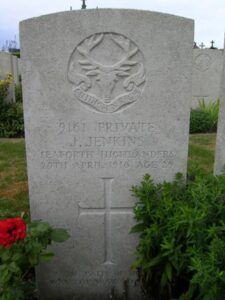
Arthur Saunders Jones, Second Lieutenant, Royal Air Force. Arthur was born at Llanfair Caereinon on 30 May 1899, the son of Reverend William Jones and Mrs Mary Ellen Jones. His father, who was from Betws, died on 12 April 1902, and his widowed mother moved her family to Gorphwysfa, Victoria Road, Prestatyn. He was a bank clerk prior to enlisting into the Royal Flying Corps on 6 June 1917 and was soon commissioned as a Second Lieutenant. He trained as a pilot at Farnborough and Oxford prior to being sent out to France with 108 Squadron, RAF in August 1918. The squadron was a bomber unit, equipped with the Airco DH9 bomber, based at Capelle, near Dunkirk. On 27 September 1918 Arthur took off from Capelle flying DH9, Serial E669, destined to bomb Courtrai and his aircraft never returned. It was later found to have been shot down near Lichtervelde, to the north of Roeselaere that day and both Arthur and his gunner, Sergeant Alfred Richardson were buried there in the German Cemetery. After the war their graves were relocated into Sanctuary Wood Cemetery, Belgium. Arthur was still just 18 years old when he was killed that day. His brother, Ivor, had been killed earlier that year.
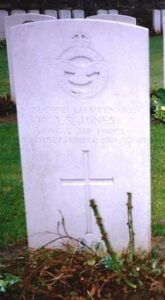
Ivor Dryhurst Jones, Lieutenant, South Wales Borderers. Ivor was born in Llanfair Caereinon, the son of Reverend William Jones and Mrs Mary Ellen Jones. His father, who was from Betws, died on 12 April 1902, and his widowed mother moved her family to Gorphwysfa, Victoria Road, Prestatyn. Ivor enlisted into the Montgomeryshire Yeomanry, but was commissioned into the South Wales Borderers on 28 August 1917. He was posted to the 5th Battalion, South Wales Borderers, which was the Pioneer Battalion to the 19th (Western) Division, joining the battalion at Ypres. The division moved to the Somme following the closure of the Battle of Passchendaele and on 21 March 1918 got caught up in the German Spring Offensive, seeing terrible fighting over the coming days. The battered division was withdrawn and moved to a more peaceful sector near Messines Ridge to rebuild, but on 9 April 1918 the Germans launched a second offensive along the Lys valley and the 19th Division, situated on the Messines to Wytschaete Road, was again caught up in desperate fighting. Two companies of the 5th SWB were sent forwards to take up positions near Lumm Farm on the following morning, but found that the divisional infantry had been pushed back, and they were in danger of being surrounded. Ivor was killed during heavy fighting when the battalion was attempting to withdraw to Bois Wytschaete on 10 April 1918. The 18-year-old has no known grave and is commemorated on the Tyne Cot Memorial, Belgium. His brother Arthur was killed just months later.
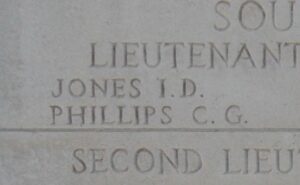
A third, elder brother, Reverend Willian Alcuin Jones, was an Army chaplain, who was awarded the Military Cross and Bar during the war. The London Gazette of 22 April 1918 published the award of the Bar to his MC, and read: ‘For conspicuous gallantry and devotion to duty. During the capture of a hill he volunteered to take charge of the stretcher bearers and throughout the day attended to and dressed the wounds in the open under heavy machine gun and rifle fire, assisting on several occasions to carry stretchers himself. He displayed marked gallantry and contempt of danger.’ After the war he became Vicar of Llangollen. His son, Ivor Alcuin Jones, served in the RAF in WW2 and died in a flying accident in 1944. He is buried in St John’s Churchyard, Llangollen.
William Jones, Private, 6314, Welsh Regiment. William was the husband of Annie Jones, of 16, Rice Street, Betws. He was a pre-war regular, who had re-joined the 2nd Battalion, Welsh Regiment at Pontypridd at the outbreak of war. The Battalion was attached to 3 Brigade, 1st Division, which had been one of the first to arrive in France, fighting at the Battle of Mons, and taking part in the retreat to the Marne, where the Germans were stopped. They then fought at the Battle of the Aisne, during the famous action at Chivy Ridge, before being moved north to Ypres, taking up a defensive line east of the city, along the Menin Road. Here they fought at the First Battle of Ypres, where they again stopped the German Offensive, but at heavy cost, including the battalion CO, Charles Bernard Morland. The division wintered just to the south of Ypres, near Festubert, in ground so wet that sandbag walls had to be erected above ground and rebuilt its strength. On 20 December 1914 the battalion moved out of reserve at Outtersteene and marched to billets in Merville for the night. On the following morning the 2nd Welsh marched to Bethune where orders were received for the 3rd Brigade to make an attack on the German line near Festubert. The brigade attacked from the direction of Gorre, but the attack was ultimately unsuccessful. William was killed in action during this attack on 21 December 1914, aged 32. He is buried in Brown’s Road Military Cemetery, Festubert.
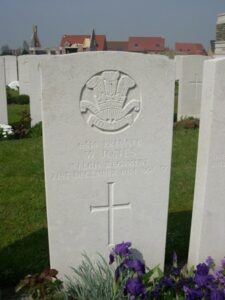
William Howell Jones, Private, 5244, Welsh Regiment. William was the son of Jacob and Anne Jones, of Betws. He married Rachel Annie Davies in 1909 and the couple resided at 9, Moelwyn Terrace, Garnant. William enlisted at Ammanford into the 1/4th Battalion, Welsh Regiment, which was attached to 159 Brigade, 53rd (Welsh) Division. The Division moved to the Mediterranean, sailing from Devonport in July 1915. The division landed at Gallipoli on 9 August 1915, with few maps, and immediately faced the chaotic leadership that was to lead to the ultimate failure of the campaign, spending the next few days in isolated pockets, fighting against a number of Turkish counter-attacks. William was killed in action just days after landing, during the Battle of Sari Bair (Attack on Scimitar Hill) on 10 August 1915, aged 24. He has no known grave, and so is commemorated on the Helles Memorial, Gallipoli.
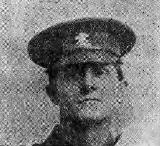
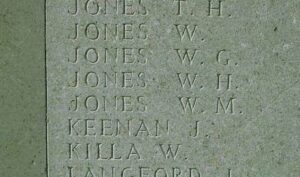
David Morgan Lewis, Sapper, 145192, Royal Engineers. David was the son of Mrs. Mary Ann Evans, of 28, Betws Road, Ammanford. He enlisted at Ammanford into the Royal Engineers, and served with the 69th Field Company, which was attached to the 12th (Eastern) Division. The Division landed at Boulogne on 31 May 1915, and took over the line at Ploegsteert Wood. It then moved south and fought in the Battle of Loos, and the subsequent actions of the Hohenzollern Redoubt, and remained there until March 1916. By June the division in position at the Somme, and attacked Ovillers on 2 July 1916. It fought at Pozieres and Le Transloy before being moved to the Arras area during October 1916, where it fought in the Battle of Arras, helping to capture the strongly defended village of Rouex. The Division remained at Arras until taking part in the Battle of Cambrai in November, 1917. David was killed in action here on 30 November 1917, aged 26. He has no known grave, and so is commemorated on the Cambrai Memorial, Louverval.
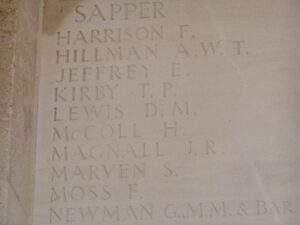
Leslie Watkins, Private, 21218, Royal Welsh Fusiliers. Leslie was the son of Albert and Eliza Watkins, of 15, Nantymelin Terrace, Coedely, Llantrisant, Cardiff. He had lived with his brother and sister at Pontyfallen, Betws prior to the war, before moving to the valleys to work at Onllwyn Colliery, Seven Sisters. Leslie enlisted in Neath into the 14th Battalion, Royal Welsh Fusiliers, which was attached to 113 Brigade, 38th (Welsh) Division. The division landed in France during the first week of December 1915, and after trench initiation, fought at Mametz Wood in July 1916, and at Pilckem Ridge in July/ August 1917. From August 1918 onwards the division took part in the Great Advance towards the Hindenburg Line, and after the German defences had been smashed, advanced past Le Cateau towards the Forest of Mormal. Leslie was killed during heavy fighting around the village of Forest, on the edge of the Forest of Mormal, on 4 November 1918, aged 21. He is buried in Forest Communal Cemetery, France.
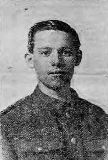
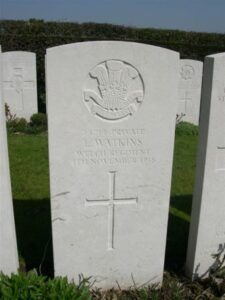
World War Two, 1939-1945
Thomas Luther Davies, Greaser, Merchant Navy. Thomas was born on 14 November 1907, the son of David and Annie Davies, of 4, Wern Terrace, Betws, Ammanford. He served with the Merchant Navy aboard the London registered oil tanker M.V. San Emiliano. On 9 August 1942 San Emiliano was 450 miles off Trinidad with a cargo of aviation fuel when she was torpedoed and sunk by the German submarine U-155, with the loss of 39 lives. Thomas was 35 years old when he died that day and is commemorated on the Tower Hill Memorial, London.
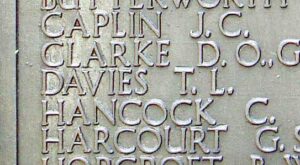
David Meirion Fowler, Marine, PLY/X113039 (D), Royal Marines. David was born on 27 March 1925, the son of David James Fowler and Susie Fowler, of Betws. He served with the Royal Marines, at HMS Golden Hind, the Royal Naval Shore Establishment at Sydney, Australia. There was a large contingent of Royal Marines stationed at Sydney, to enable immediate replacement of casualties aboard the Royal Naval ships serving in the Pacific. David died whilst flying aboard a Dakota IV, Serial KN530, which was shot down by Japanese aircraft and crashed into San Pedro Bay, Samar Island, Philippines on 24 July 1945, with the loss of ten lives. The location is in the northern section of the infamous Leyte Gulf. David was 20 years old and is buried in Sai Wan War Cemetery, Hong Kong. The Cemetery contains the graves of mostly ex-POW’s.
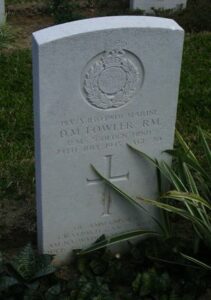
Ernest John Williams, Private, 6144769, East Surrey Regiment. Ernest was the son of Jonah Williams, and of Ellen Williams of Betws. He served with the 1st Battalion, East Surrey Regiment, which were sent to France during 1940 as part of the BEF. After returning to the United Kingdom after the evacuation from Dunkirk the 1st Battalion was reformed and was assigned to 11th Infantry Brigade, part of 78th Infantry Division, with which it remained for the rest of the war. It took part in Operation Torch in November 1942, landing in North Africa at Algiers. Following this the battalion fought with the division in Tunisia until the end of the Tunisia Campaign in May 1943. Ernest was killed in action in Tunisia on 2 December 1942, aged 22. He has no known grave, and so is commemorated on the Medjez-El-Bab Memorial, Tunisia.